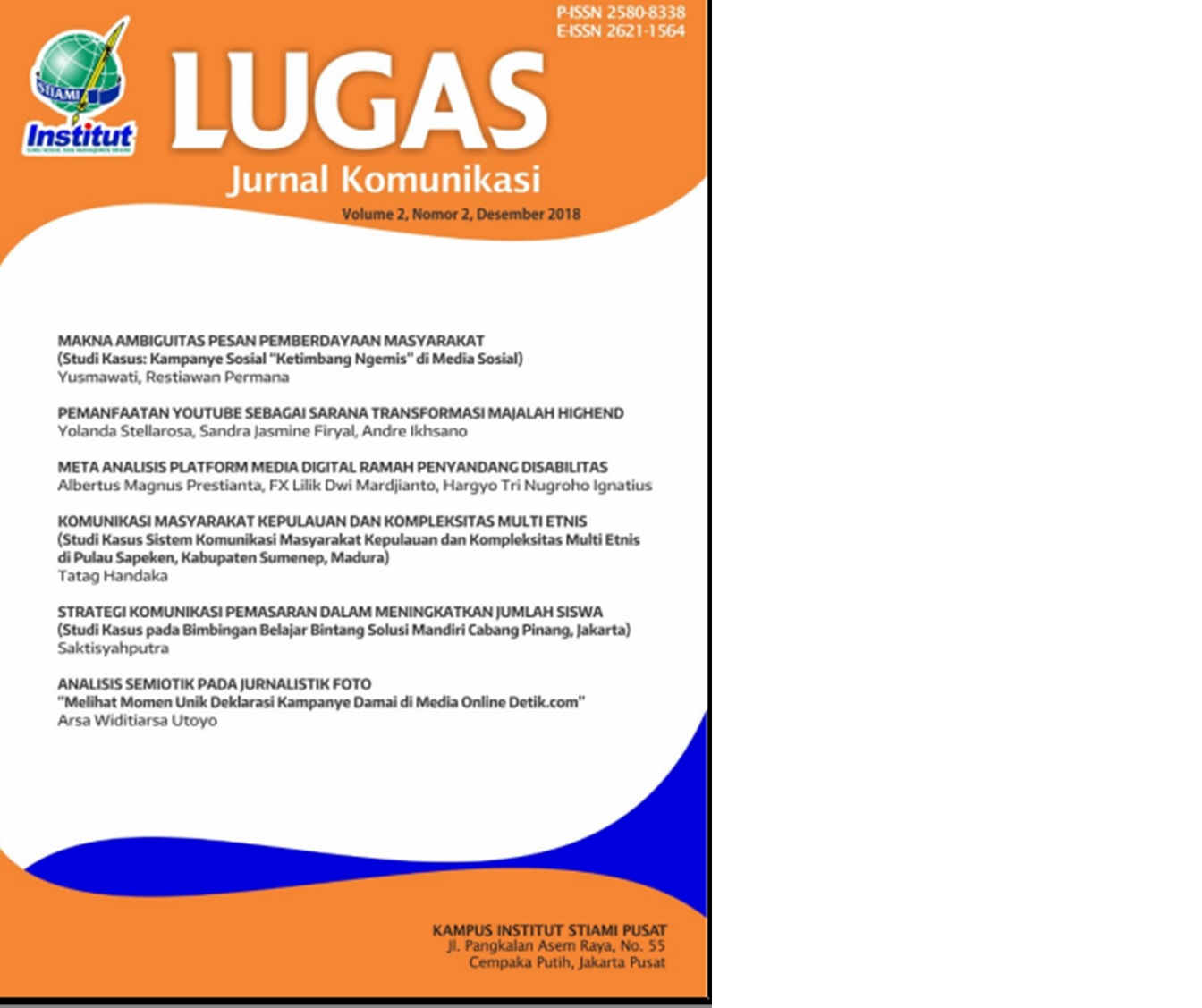Komunikasi antar Budaya dalam Masyarakat Multikultur (Studi Kasus pada Karyawan warga Negara Jepang dan Indonesia di PT. Tokyu Land Indonesia)
DOI:
https://doi.org/10.31334/ljk.v3i1.414Keywords:
Intercultural communication, Japanese and Indonesian, qualitative researchAbstract
The purpose of this study was to analyze intercultural communication between Japanese and Indonesian employees at PT. Tokyu Land Indonesia. This research was also to analyze barriers which occurred in intercultural communication between them, and how to overcome these barriers. The method used in this study was a qualitative research method with a case study approach. Data collection was carried out by using an in-depth interview with 3 Japanese and 3 Indonesian employees, observation, and relevant previous research articles, and research-related documents. This research used the intercultural communication model of William B. Gudykunst and Young Yun Kim, intercultural communication concepts from Edward T. Hall, such as proxemics (the concept of distance), chronemics (the concept of time), high context and low context communication, individualism and collectivism, stereotypes. The results of the study showed that intercultural communication between Japanese and Indonesian employees at PT. Tokyu Land Indonesia is relatively good. Obstacles that occurred in intercultural communication are due to problems of differences and understanding of language, habits, respect for time (Japanese monochronic while Indonesia is polychronic), and the existence of stereotypes from each nation. To overcome these obstacles, they have to learn more about Japanese culture for Indonesian employees, and Indonesian culture for Japanese employees, openness to confirm understanding of the message delivered, mutual respect, and forgiveness each other if a misunderstanding occurs.References
Arifin, C. (2019). Sepanjang 2018, Jumlah Pekerja Asing di Indonesia Naik 10,88. Retrieved from https://www.tribunnews.com/bisnis/2019/01/13/sepanjang-2018-jumlah-pekerja-asing-di-indonesia-naik-1088-persen-jadi-95335-orang
Aryandani, J. (2016). Pola Komunikasi Antarbudaya pada Komunitas Korea Hansamo di Bandung,. Retrieved from http://repository.unpas.ac.id/view/year/2016.type.html)
Devito, J. A. (2009). The Personal Communication Book (12th Editi). New York: Pearson Education.
Griffin, E. (2006). A First Look atof Communication Theory. USA: Mc.Grawhill.
Hidayatullah, S. (2017). BAHASA KOMUNIKASI NONVERBAL Pengirim Pesan tanpa Kata. Jakarta.
Retrieved from http://repository.uinjkt.ac.id/dspace/bitstream/123456789/32442/3/Bahasa Komunikasi
Nonverbal ~ Moch. Syarif.pdf
Hybels, S., & Weaver II, R. (2009). Communicating Effectively. New York: McGraw-Hill Companies.
Liliweri, A. (2013). Dasar-Dasar Komunikasi Antarbudaya. Yogyakarta: Pustaka Pelajar.
Mulyana, D. (2014). Pengantar Ilmu Komunikasi. Bandung: Rosda Karya.
Rahayuningsih, I. (2014). Komunikasi Lintas Budaya dalam Organisasi (Studi Kualitatif) melalui
Masyarakat Ekonomi Asean (MEAâ€. Retrieved from http://journal.umg.ac.id/index.php/psikosains/article/view/241
Samovar, L. A., Porter, R. E., & McDaniel, E. R. (2014). Komunikasi Lintas Budaya (Terjemahan Communication Between Cultures) (Edisi 7). Jakarta: Salemba Humanika.
Siregar, I. (2017). Komunikasi Antarbudaya Mahasiswa Malaysia dan Indonesia Fakultas Dakwah dan Komunikasi di UIN Sumatera Utara. Retrieved from %0Ajurnal.uinsu.ac.id/index.php/balagh/article/view/1234%0A%0A
Tubbs, S., & Moss, S. (2008). Human Communication, (11th Editi). New York: McGraw-Hill Companies.
Turistiati, A. T. (2019a). Kompetensi Komunikasi Antarbudaya (1st ed.). Jakarta: Mitra Wacana.
Turistiati, A. T. (2019b). Strategi Adaptasi Mahasiswa Indonesia di Nara Jepang, Tinjauan Komunikasi antar Budaya. Jurnal IDIK, Vol.1(No.1). Retrieved from http://jurnal.idikunpad.com/index.php/jik/article/view/4/6
Blog & Wikipedia:
Anchor Books at https://id.wikipedia.org/wiki/Proksemik, diakses tanggal 1 Mei 2019
http://commscience166a.blogspot.com/2012/10/model-komunikasi-gudykunst-dan-young.html, diakses tanggal 1 Mei 2019
Downloads
Published
Issue
Section
License

This work is licensed under a Creative Commons Attribution-NonCommercial-ShareAlike 4.0 International License.
Copyright Notice
Please find the rights and licenses in LUGAS Jurnal Komunikasi, spirit is to disseminate articles published are as free as possible. Under the Creative Commons license, LUGAS Jurnal Komunikasi permits users to copy, distribute, display, and perform the work for non-commercial purposes only. Users will also need to attribute authors and LUGAS Jurnal Komunikasion distributing works in the journal and other media of publications.
4.Co-Authorship
If the article was jointly prepared by more than one author, any authors submitting the manuscript warrants that he/she has been authorized by all co-authors to be agreed on this copyright and license notice (agreement) on their behalf, and agrees to inform his/her co-authors of the terms of this policy. LUGAS Jurnal Komunikasi will not be held liable for anything that may arise due to the author(s) internal dispute. LUGAS Jurnal Komunikasi will only communicate with the corresponding author.
5.Miscellaneous
LUGAS Jurnal Komunikasi will publish the article (or have it published) in the journal if the article’s editorial process is successfully completed. LUGAS Jurnal Komunikasi editors may modify the article to a style of punctuation, spelling, capitalization, referencing and usage that deems appropriate. The author acknowledges that the article may be published so that it will be publicly accessible and such access will be free of charge for the readers as mentioned in point 3.
Every accepted manuscript should be accompanied by "Copyright Transfer Agreement" prior to the article publication.





.png)

